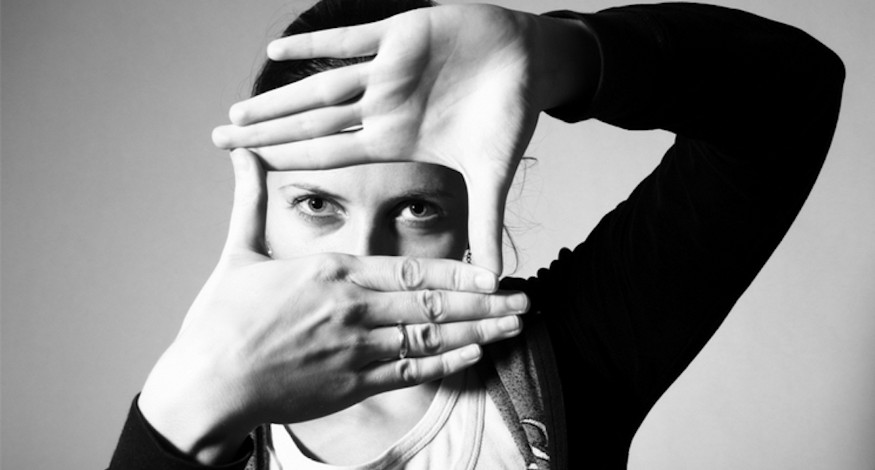I’m musing about creativity in the arts and cultural sector right now…in fact, I’m a little preoccupied by it.
In my last post I asked, “Do we lack the creative environment required to fuel the sector’s pandemic recovery? In a way that matches its fullest, most brilliant possibilities?”
I think the answer is “yes, we do lack the creative environment necessary.” And even with the many individual and organizational examples of creativity produced during the pandemic, I still think the answer is “yes.” So, I’m digging into why I think this, and I’ve invited you to join me.
First, I have a question for you, reader. Whether you’re the CEO of your organiz/sation or a professional within it, do you think of yourself as creative? As a creative?
It matters, according to Michael Michalko, one of the world’s most acclaimed experts in creativity, who claims that “the artist is not a special person, each one of us is a special kind of artist.” He goes on to say in a 2011 post titled, “Twelve Things You Were Not Taught in School About Creative Thinking”[1] that “every one of us is born a creative, spontaneous thinker. The only difference between people who are creative and people who are not is a simple belief. Creative people believe they are creative. People who believe they are not creative, are not.”
In early 2020 I read the book “Hustle & Float” by Rahaf Harfoush. Those of you who know something about me know how much I read, and that in 2018-19 I hosted a TRG Arts Book Club for geeky book-loving people like me. “Hustle & Float” had been on the list for more than a year and in early 2020 I finally got to it.
Just in time.
There’s no way you have enough time right now, in this moment, to read the many extraordinary things I learned from Harfoush in this book. It starts with this assertion: in today’s knowledge economy, original ideas are the most valuable currency, and creativity is a necessary attribute for professionals across disciplines.[2] Now, I’ve read/heard this before. Richard Florida, the now-famed consultant, researcher and thought leader said in his revisited version of “The Rise of the Creative Class”[3] that “…creativity has come to be valued—because it is increasingly recognized as the font from which new technologies, new industries, new wealth, and all other good economic things flow.”

Creativity as a Necessity
It appears that creativity matters. That it should be part of what delivers our brilliant futures. And both Harfoush and Florida describe that creativity is now required in all manner of work, from strategic planning to marketing, executive and board leadership to event management. No one in arts and culture makes widgets…all of these positions require creative problem-solving, ideation and interpersonal skill and more to succeed.
And yet: do you consider yourself a creative? According to Harfoush, just 25% of people think they’re living up to their creative potential.[4] And my own personal experience makes it clear to me that a specific environment enables creativity to thrive. Jim March, professor emeritus at Stanford University argued in 2008[5] that creativity is about creating novelty, which requires three things: 1) slack, which means having sufficient time and resources for exploration, 2) hubris, which inspires managers to take risks, and 3) optimism, which takes hold when a vision of something truly different is made to seem more promising than the status quo.
As I’ve mentioned previously, during the pandemic I’ve had a front-row seat to arts and cultural CEOs and their fears, successes and failures. In 2021 this continues. As I dialogue with them, I’ve begun to listen for March’s novelty triad of slack, hubris and optimism.
Here’s what I’m hearing:
- For starters, arts and cultural leaders don’t necessarily think of themselves as creative. Which is interesting. These leaders operate in environments designed and operating for creative endeavors. While it’s wildly debatable that creativity can be measured, the Kellogg School of Management at Northwestern University has created a test for it. Try it here.
- There is no slack in their environment. I recently re-read the book “Scarcity” by Mullainathan and Shafir.[6] People and organizations without slack behave in very specific ways that lead to tunneling, firefighting modes that don’t serve them or their organizations in the long-term, much less creativity and innovation. On the constant treadmill of producing and presenting events and exhibits, arts and cultural leaders and administrators are never-ending party hosts. Over time, the treadmill becomes weirdly and actually comfortable. And predictable. And “the busy” keeps them from growing, expanding, changing. From being creative.
- Hubris is something that individuals often have in arts and culture, but that is often constrained by business models or governance structures that control risk-taking, overhead investment, or limits “too much” change “too fast”. Remember, “hubris” in this definition is positive—it inspires risk-taking, believing that the identified new way actually is worth the invested time and/or other resources.
- And optimism? In the context of the pandemic, the old status quo might feel “pretty good, just fine, and thank you.”

Creativity as a Practice
Harfoush says in her book that there is no such thing as a creative personality, and Michalko said that 1) creative thinking is work, 2) you must go through the motions of being creative, 3) your brain is not a computer and requires protection to continue its creativity, and more. My take: one must work at being creative. It is a choice. I believe this, too.
Why should we care? Our sector of arts and culture has been hit operationally and financially—maimed, really—by a global pandemic. Recovery and resilience will require the most creativity we can muster as we move through and past it. And as Harfoush and others describe, in today’s knowledge economy, original ideas are the most valuable currency, and creativity is a necessary attribute for professionals of all types.
As a CEO and entrepreneur in the arts and cultural sector I’m on a personal journey related to this point. I, too, have experienced the treadmill, the life-long marathon with the constant thump-thump-thump of my shoes on the rubber as it pushes me forward. But now, I believe more than ever that communities require our sector to thrive and push to a new, innovative and inclusive future.
What do you think? Do you know examples of creative leaders who demonstrate the characteristics I’ve described above, or more? I’d love to know of them! join my email club to communicate directly and share examples with me, as well as get the latest updates on my research.
I believe our futures can be full, and brilliant. I believe that this will require a new kind of creativity from me; from arts and cultural leaders. Let’s choose to make ourselves and our sector as creative as we can be.
Jill S. Robinson CEO | TRG Arts
Footnotes:
[1] Twelve Things You Were Not Taught in School About Creative Thinking, Creativity Post, 2011.
[2] Harfoush, “Hustle & Float” pg. 172.
[3] Florida, “The Rise of the Creative Class--Revisited,” Chapter 2.
[4] Harfoush, “Hustle & Float,” pg. 63
[5] Creativity and the role of the leader, Harvard Business Review, 2008.
[6] Mullainathan and Shafir, “Scarcity.”
Jill S. Robinson is CEO of TRG Arts (The Results Group for the Arts), a renowned international, data-driven change agency and a ColoradoBIZ Top 100 Women-Owned Company. As a driving force in the arts and culture sector, Jill has inspired leaders and organizations for more than three decades, and her expertise and counsel are sought out by arts and cultural executives worldwide. Jill believes in the transformative power of arts and culture experiences, and that positive, profound change in the business model of arts organizations leads to artistic innovation that can inspire entire communities.
TRG 30 is a bi-weekly 30-minute series of conversations and provocations with CEO Jill Robinson and invited guests. Open to anyone in the arts and cultural sector, the sessions provide insight, counsel and inspiration.
Register Today